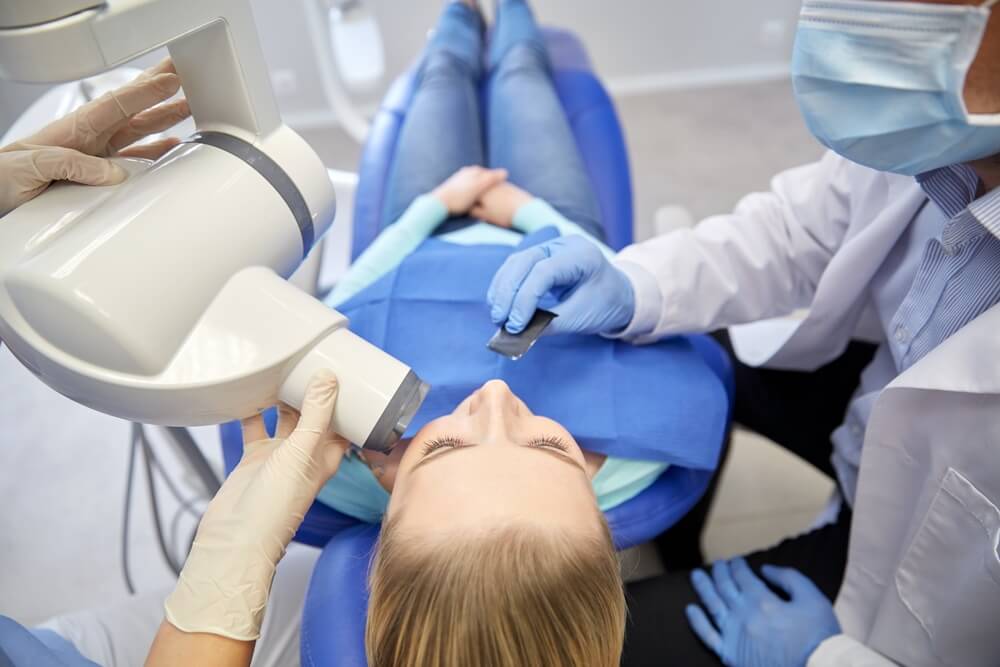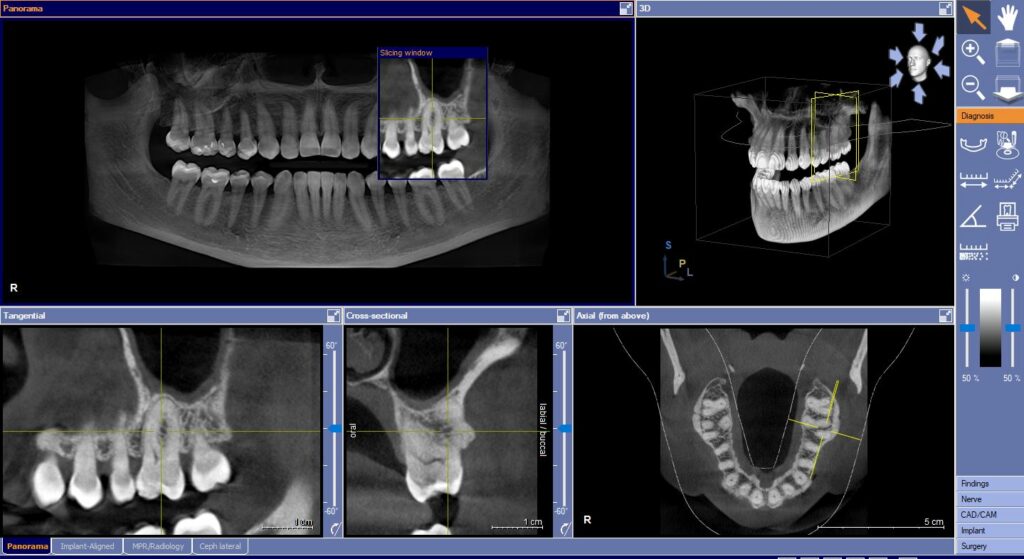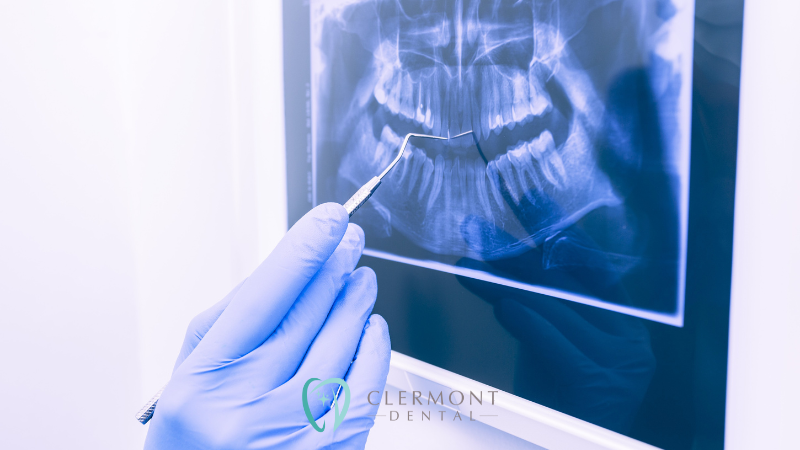It’s safe to say that dental x-rays are one of the most important tools used by dentists. What you may not know, however, is that there are actually multiple types of dental x-rays available.There are a number of dental x-rays that should be taken to achieve the best treatment results and prevent problems in the future.
In the last blog post, we generally introduced dental radiography—the use of various imaging techniques to capture the internal structures of teeth, jaws, associated soft tissues and adjoining orifices. Here we will be talking about different kinds of dental x-rays: bitewings, periapicals (PA), and panoramic; how they are used in dentistry; their unique applications and benefits.
Let’s explore the different types below:
Dental X-ray Categories
First things first, there are two main categories of dental x-rays; intraoral and extraoral. Intraoral and extraoral dental x-rays are two different types of imaging techniques used in dentistry
Intraoral x-rays are taken with the x-ray film or digital sensor placed inside the mouth. This allows for a close-up view of the teeth, gums, and supporting bone structures. Intraoral x-rays are the most common type of dental x-rays and provide detailed images used to diagnose cavities, gum disease, and conditions affecting the root of the tooth. There are several types of intraoral x-rays, including bitewing, periapical, and occlusal x-rays, each focusing on different aspects of the teeth and surrounding structures.

On the other hand, extraoral x-rays are taken with the x-ray film or digital sensor outside the mouth, capturing a broader view of the oral and facial structures. Extraoral x-rays primarily focus on the jaw and skull, providing an overall picture of the dental and skeletal structures of the head and neck. These x-rays are useful for diagnosing issues such as impacted teeth, fractures, tumors, and assessing overall bone health. However, they do not provide as much detail as intraoral x-rays when it comes to detecting cavities or evaluating specific dental conditions

Intraoral X-rays
1. Bitewing X-rays:
Bitewing x-rays are the most common type of dental x-ray. This type of x-ray is used to detect decay between teeth, the fit of dental fillings and to monitor the progression of bone loss in the jaw due to gum disease. Bitewing x-rays get their name because they require biting down on a small wing-shaped device that holds the x-ray film in place.
During a bitewing x-ray, the x-ray technician will place the x-ray film inside your mouth, typically on each side of your jaw, and ask you to bite down. The technician will then take the x-rays.
2. Periapical X-rays:
Periapical x-rays are similar to bitewing x-rays in that they detect decay and monitor bone loss. Periapical x-rays, however, show the entire tooth structure, from the crown to the end of the root. This type of x-ray is used to diagnose abscesses, cysts, and other abnormalities of the tooth and bone structure.
During a periapical x-ray, the x-ray technician will ask you to bite down on a small device that holds the x-ray film in place. The technician will then place the x-ray equipment outside of your mouth and take the picture.
3. Occlusal X-rays:
An occlusal x-ray is used to examine the overall bite to diagnose abnormalities in the development of the upper or lower jaw as well as detect large cysts, tumors, and fractures. The x-ray technique also helps detect extra teeth or extra bones in the jaw. During an occlusal x-ray, you will bite down on a special film held by the technician.
Extraoral X-rays
1. Panoramic X-rays:
Panoramic x-rays provide a comprehensive view of the entire oral structure: the teeth, jaw, and other structures in the mouth including sinuses. This type of x-ray is used to diagnose tumors, impacted teeth, fractures in the jawbone, and other dental issues.
During a panoramic x-ray, the x-ray equipment rotates around your head while you stand or sit in the center of the machine. The process takes only about 15 seconds.
2. Cone Beam Computed Tomography (CBCT):

A Cone Beam CT (CBCT) is a specialized x-ray machine used when regular dental x-rays are not enough. It provides advanced imaging with a more detailed view of the mouth’s structures, including bone and soft tissue. A CBCT is often used before implant surgery to help plan the procedure, as well as diagnose more complex issues like facial pain or temporomandibular joint disorder (TMJ).
During a CBCT, the x-ray equipment rotates around your head while you sit or stand. The process takes about 20-30 seconds. Unlike other x-rays, a CBCT requires less radiation exposure.
The Benefits of Dental X-Rays
Dental x-rays play a vital role in detecting and identifying dental problems. By identifying dental problems early, your dentist can develop a plan to correct the issue before it becomes more severe. The type of x-ray your dentist chooses depends on the diagnosis needed, your medical history, and other factors. Some benefits of dental x-rays include:
- Early detection: X-rays allow dentists to identify issues before they become more problematic.
- Prevention: X-rays can help identify problems before they occur, giving patients the chance to take a proactive approach to their dental health.
- Accuracy: X-rays provide a detailed image of the teeth and other mouth structures. This allows your dentist to plan procedures with more precision.
- Cost-effective: Detecting dental issues early with x-rays can save patients the cost of more extensive treatments later.
- Improved overall health: Dental problems, if left untreated, can lead to general health issues, like infection or tooth loss.
Conclusion
We hope this blog post has been informative and has given you a better understanding of the different types of dental x-rays and the benefits they provide. Remember, regular dental checkups and x-rays can detect dental issues early, helping you maintain a healthy smile and overall health. And, of course, if you have any questions or concerns about dental x-rays or any other oral health issues, don’t hesitate to contact us at 303-691-3333.








